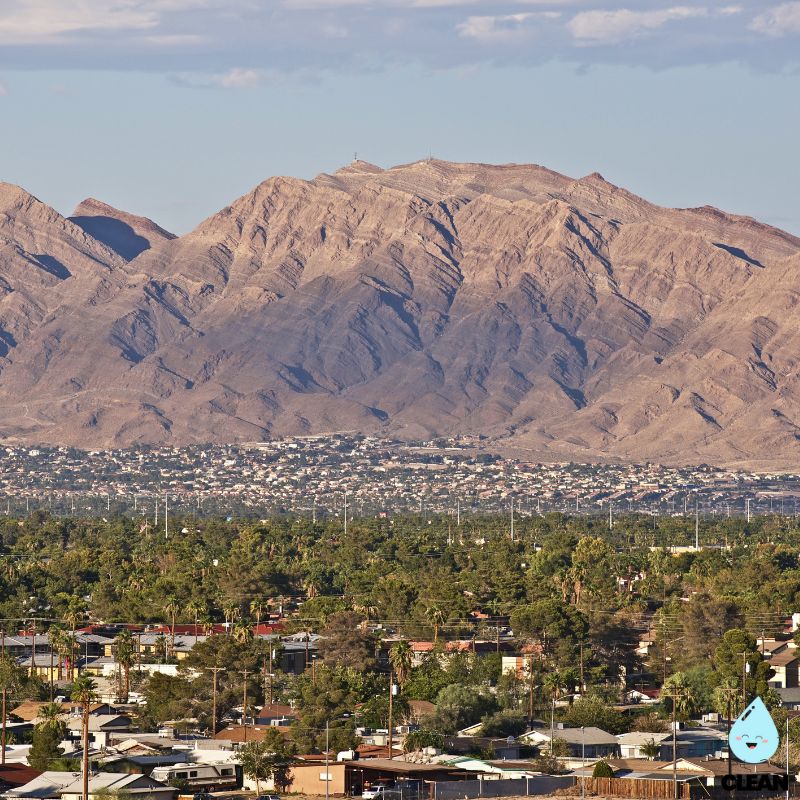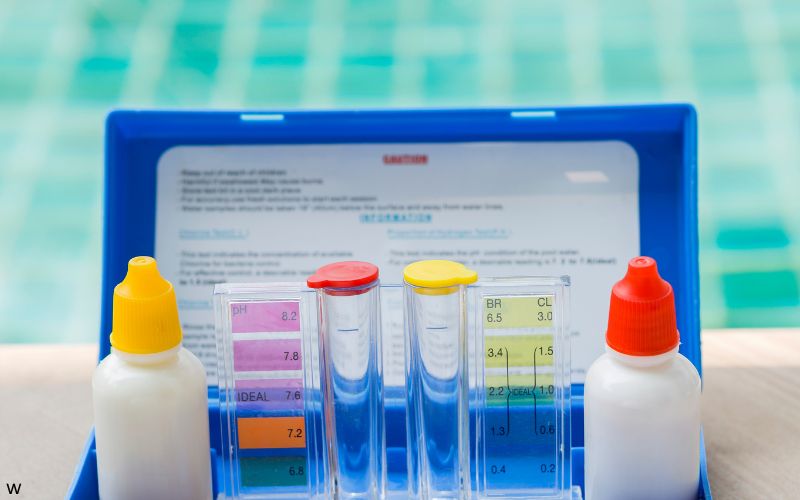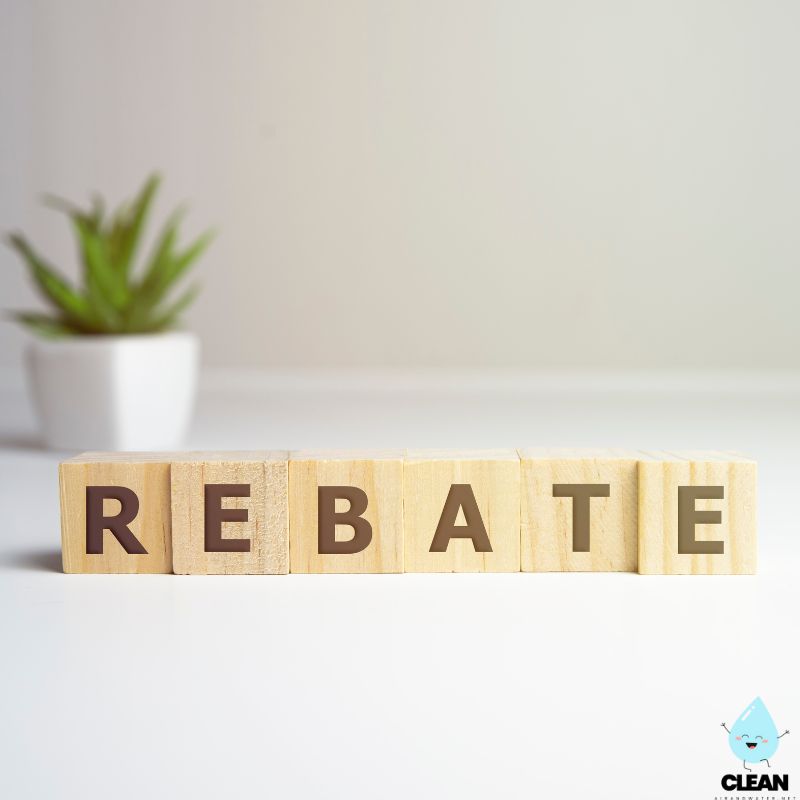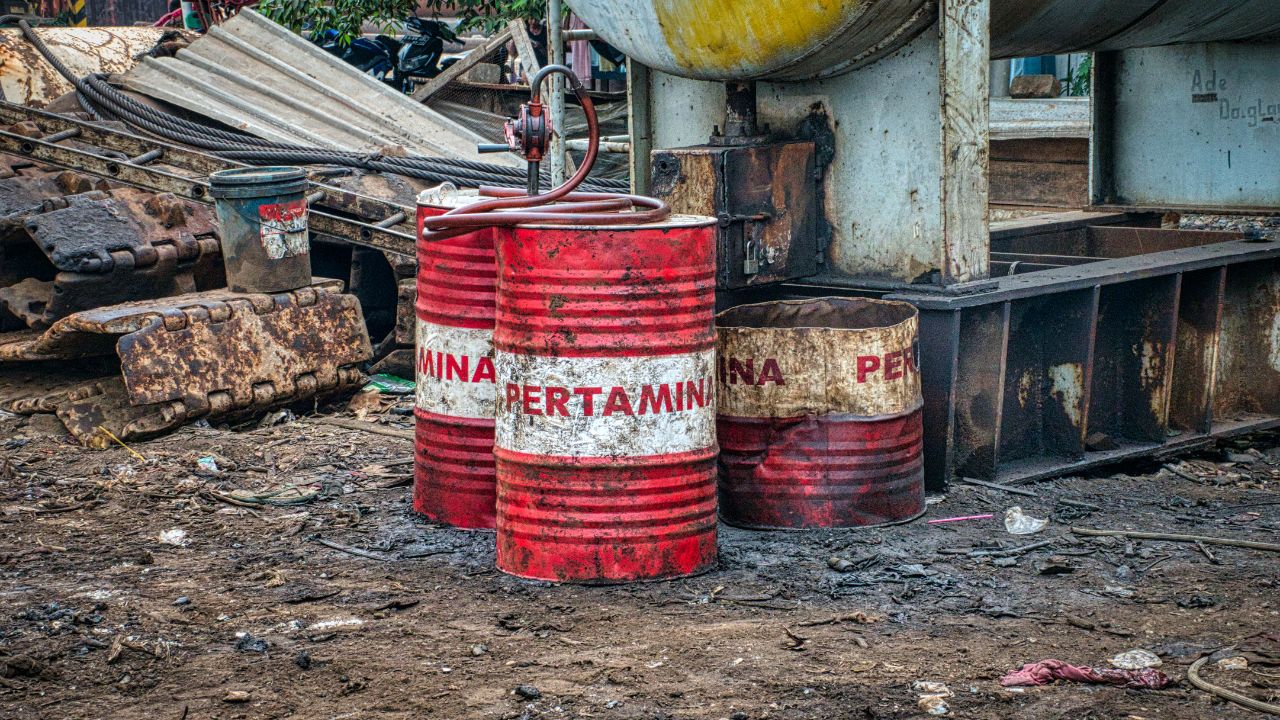North Las Vegas Water Quality at a Glance
contaminants present
Is North Las Vegas Water Safe to Drink?
Meets Standards, Multiple Contaminants Present – North Las Vegas water meets federal standards but contains concerning levels of lead (up to 5.6 ppb), arsenic (0.7-4.0 ppb), chromium-6 (54-850 ppt), and disinfection byproducts. The city shares the SNWA water system that serves 2.2 million residents. While PFAS levels are currently below detection limits, nearby military bases including Nellis AFB have documented severe PFAS contamination up to 47,400 ppt in groundwater.
⚠️ Key Concerns for North Las Vegas Residents
- Military PFAS Contamination: Nellis AFB groundwater shows PFOA + PFOS levels up to 47,400 ppt; Creech AFB up to 21,066 ppt from firefighting foam
- Heavy Metal Contamination: Arsenic detected up to 4.0 ppb; Lead up to 5.6 ppb in 10% of samples; Chromium-6 levels 54-850 ppt (3-40x California safe levels)
- Disinfection Byproducts: Chloroform and other trihalomethanes formed during water treatment process; potential cancer risks
- Colorado River Dependency: 90% reliance on drought-stricken Lake Mead; water cuts implemented due to shortages; quality varies with source water conditions
Read the full report below for detailed analysis, city-specific data, and actionable recommendations for North Las Vegas residents.
North Las Vegas – Nevada – Water Quality Report 2025: PFAS Testing, Infrastructure Concerns & Safety across your city
North Las Vegas provides water services to approximately 300,000 residents across the northern Las Vegas Valley, making it the third-largest city in Nevada. The City of North Las Vegas receives water from the Southern Nevada Water Authority (SNWA) regional system, which delivers approximately 35 million gallons of drinking water daily across the rapidly growing community through an extensive network of distribution lines, pumping stations, and storage facilities managed by both SNWA and local utilities.
North Las Vegas sources its drinking water from two primary sources: surface water from the Colorado River via Lake Mead (approximately 90%) and groundwater from the deep carbonate aquifer beneath the Las Vegas Valley (approximately 10%). Surface water is treated at the Southern Nevada Water Authority’s Alfred Merritt Smith Water Treatment Facility and River Mountains Water Treatment Facility, while groundwater is processed through regional well systems and treatment facilities. North Las Vegas water consistently meets all federal and state quality standards, though the desert community faces ongoing challenges with water conservation, drought conditions on the Colorado River, and the management of extremely hard water that contains high mineral content from the river system.

North Las Vegas Water Quality: Current Status (2024-2025)
Latest Testing Results
- Lead and Copper Monitoring: North Las Vegas maintains full compliance with EPA regulations for lead and copper in drinking water. However, 10% of samples tested for lead exceed 3.9 parts per billion, with some samples measuring as high as 5.6 ppb. The Las Vegas Valley Water District has certified that there are no lead service lines within the distribution system.
- Testing Scope: The Southern Nevada Water Authority conducts over 301,000 water quality analyses annually on more than 62,000 water samples from Lake Mead, storage reservoirs, and 380 community-wide sampling stations serving North Las Vegas and the regional network.
- Compliance Status: North Las Vegas water consistently meets or surpasses all federal and state drinking water standards, maintaining compliance with EPA and Nevada Division of Environmental Protection regulations, though multiple contaminants are present at concerning levels.
Water Sources
- Lake Mead/Colorado River: Primary source (approximately 90% of supply) drawn from Lake Mead, the largest reservoir in the United States, which receives water from the Colorado River originating from Rocky Mountain snowmelt. Lake Mead was only 31% full as of June 2024 due to ongoing drought.
- Las Vegas Valley Groundwater: Secondary source (approximately 10% of supply) pumped from the deep carbonate aquifer beneath the Las Vegas Valley, used primarily during summer months to meet peak demand. Some groundwater sources have been contaminated by PFAS chemicals from nearby military activities.
- Regional Water Management: North Las Vegas participates in the Southern Nevada Water Authority’s comprehensive water recycling program, where nearly 99% of indoor wastewater is treated and returned to Lake Mead for return-flow credits.
Advanced Treatment Technology
- Alfred Merritt Smith Facility: The primary treatment facility serving North Las Vegas utilizes advanced ozonation, multi-stage filtration, and chlorine disinfection, with a current capacity of 600 million gallons per day. Built in 1971, the facility was upgraded in 2003 with ozone treatment technology.
- River Mountains Treatment Facility: Secondary treatment facility with current capacity of 300 million gallons per day, designed to expand to 600 million gallons per day capacity as needed. Began operations in 2002.
- Water Recycling Technology: The region operates state-of-the-art Water Reclamation Facilities using advanced membrane bioreactor technology to produce high-quality reclaimed water for non-potable uses throughout the valley.
Infrastructure and Modernization
- Distribution System: The Las Vegas Valley Water District maintains over 7,100 miles of water transmission and distribution pipelines serving North Las Vegas and the region, with 54 pumping stations capable of moving more than 1 million gallons per minute and 84 reservoir basins holding nearly a billion gallons.
- Groundwater Banking: The region participates in extensive groundwater banking programs, with SNWA having banked over 2.2 million acre-feet of treated Colorado River water underground for use during drought conditions or emergencies.
- Smart Infrastructure: Advanced monitoring systems throughout the distribution network provide real-time water quality and pressure management, helping to prevent water loss and maintain system reliability through SCADA and AMI technology.
Customer Protection and Services
North Las Vegas residents receive comprehensive customer support through various regional programs, including discounted water rates for low-income senior citizens and utility assistance programs. The city offers emergency after-hours service availability and educational outreach to help residents understand water conservation practices essential for desert living and the unique challenges of extremely hard water (304 ppm mineral content). North Las Vegas’ commitment to water quality includes transparent communication through participation in regional water quality reporting and collaboration with the Southern Nevada Water Authority’s research and development initiatives for emerging contaminants including PFAS monitoring under EPA’s Unregulated Contaminant Monitoring Rule 5.
Recommendations for North Las Vegas Residents

Monitor Water Quality
Contact the Southern Nevada Water Authority’s Water Quality Division at (702) 258-3215 for water quality concerns or testing information. Independent water testing is recommended given the presence of lead, arsenic, and potential PFAS exposure from nearby military contamination.

Practice Water Conservation
Follow Southern Nevada Water Authority conservation measures: outdoor watering limited to 3 days per week, no irrigation between 11 a.m. and 7 p.m., and participate in grass replacement rebate programs offering up to $5 per square foot for LVVWD customers combined with SNWA rebates.

Consider Water Filtration
North Las Vegas water is categorized as “very hard” at 304 parts per million and contains lead, arsenic, and chromium-6. Consider NSF-certified water filtration systems designed to remove heavy metals, PFAS, and disinfection byproducts for drinking water safety.

Take Advantage of Rebates
Apply for SNWA rebate programs including grass replacement, industrial cooling system upgrades, and water-smart landscaping incentives. Las Vegas Valley Water District customers receive additional $2 per square foot on top of SNWA’s $3 rebate. Visit snwa.com for applications.

Report Issues
Contact the Southern Nevada Water Authority’s Water Quality Division at (702) 258-3215 for water quality concerns. For water waste reporting, contact SNWA conservation enforcement to help preserve this precious desert resource during ongoing drought conditions.
Frequently Asked Questions
Is North Las Vegas tap water safe to drink?
North Las Vegas tap water meets federal and state drinking water standards but contains multiple contaminants of concern. The water comes from Lake Mead (90%) and local groundwater (10%), treated at SNWA facilities.
While SNWA conducts over 301,000 water quality analyses annually, concerning levels of lead (up to 5.6 ppb), arsenic (0.7-4.0 ppb), and chromium-6 (54-850 ppt) are present. PFAS contamination from nearby military bases poses additional risks. Independent testing and appropriate filtration are recommended for optimal safety.
Why is North Las Vegas water so hard?
North Las Vegas water is classified as “very hard” with 304 parts per million of dissolved minerals, primarily calcium and magnesium picked up from the Colorado River as it flows through mineral-rich geological formations.
These minerals come from natural erosion along the 1,450-mile Colorado River journey from the Rocky Mountains to Lake Mead. While hard water can leave mineral deposits on fixtures and make soap lather difficult, it poses no health risks. Many residents choose water softening systems or filters for aesthetic and practical reasons, though the minerals actually provide beneficial calcium and magnesium intake.
What are the current water restrictions?
North Las Vegas follows Southern Nevada Water Authority conservation measures due to ongoing Colorado River drought conditions and Lake Mead being only 31% full:
Mandatory Seasonal Watering Restrictions:
• Outdoor watering limited to 3 assigned days per week based on address
• No outdoor irrigation between 11 a.m. and 7 p.m. (peak evaporation hours)
• Water waste penalties for runoff or overspray
Additional Drought Measures:
• New golf courses prohibited from using Colorado River water
• Restrictions on evaporative cooling systems for new commercial buildings
Federal shortage declarations have reduced Nevada’s water allocation, with SNWA implementing water cuts and banking programs to manage declining Lake Mead levels.
How does water recycling work in North Las Vegas?
North Las Vegas participates in one of the most advanced water recycling programs in the nation through the Southern Nevada Water Authority system:
Indoor Water Recycling:
• Nearly 99% of all indoor water use is captured and treated at wastewater facilities
• Treated wastewater flows through the Las Vegas Wash back to Lake Mead
• Return-flow credits allow the community to withdraw additional water from Lake Mead
Direct Reuse:
• Some treated wastewater directly irrigates parks, golf courses, and landscaping
• Advanced membrane bioreactor technology produces high-quality reclaimed water
This recycling system has enabled Southern Nevada to reduce per capita water consumption by 55% since 2002 despite population growth, stretching limited Colorado River allocations while maintaining water supply reliability.
Quality News About Your Water
Get the comprehensive water quality news coverage you need with our dedicated US Water News Service. From coast to coast, we deliver in-depth reporting and expert analysis on PFAS contamination, EPA regulatory changes, infrastructure developments, and emerging water safety issues affecting communities nationwide. While mainstream media only covers the biggest stories, we provide the detailed, ongoing coverage that helps you understand the full scope of America’s water challenges. Whether you’re a concerned citizen, water professional, or community leader, our daily updates and analytical insights keep you informed about the issues that matter most to public health and environmental safety.
Contaminants of Concern

PFAS Compounds
Source: Per- and polyfluoroalkyl substances from firefighting foam used at nearby military bases, including Nellis Air Force Base and Creech Air Force Base, where groundwater contamination reaches up to 47,400 ppt
Health Effects: Research links PFAS exposure to increased cancer risk, reduced fertility, developmental issues in children, immune system dysfunction, and elevated cholesterol levels
Current Status: Southern Nevada municipal water shows PFAS below detectable limits, but nearby military contamination poses ongoing exposure risks. EPA Action: New federal regulations limit PFOA and PFOS to 4 ppt effective 2024

Heavy Metals
Source: Lead from plumbing corrosion in homes built before 1986; arsenic occurs naturally in Colorado River water and groundwater; chromium-6 from industrial contamination and natural deposits
Health Effects: Lead causes developmental delays and neurological damage, particularly in children; arsenic increases cancer risk for skin, bladder, lung, kidney, and prostate cancers; chromium-6 is linked to stomach cancer and other health issues
Current Status: Lead detected up to 5.6 ppb in 10% of samples; arsenic ranges 0.7-4.0 ppb throughout the system; chromium-6 levels 54-850 ppt (3-40 times California’s safe level of 20 ppt). Action Needed: Point-of-use filtration recommended for homes with elevated levels
Please read – our information
The information presented on cleanairandwater.net is compiled from official water quality reports, trusted news sources, government websites, and public health resources. While we strive for accuracy and thoroughness in our presentations, we are not scientists, engineers, or qualified water quality professionals.
Our mission is to present water quality information in an accessible, real-world format that helps people understand what’s in their water and make informed decisions about their health and safety. We believe that complex environmental information should be available to everyone in a format that’s easy to understand.
We make every effort to ensure our content is current and accurate, but we cannot guarantee that all information is complete or error-free. This website should not replace official communications from your local water utility or health department. We always recommend consulting official sources for the most up-to-date information regarding your specific water system.
Clean Air and Water is not liable for any unintentional errors, omissions, or outdated information. The content on this site is provided for informational purposes only and should not be considered professional advice.


